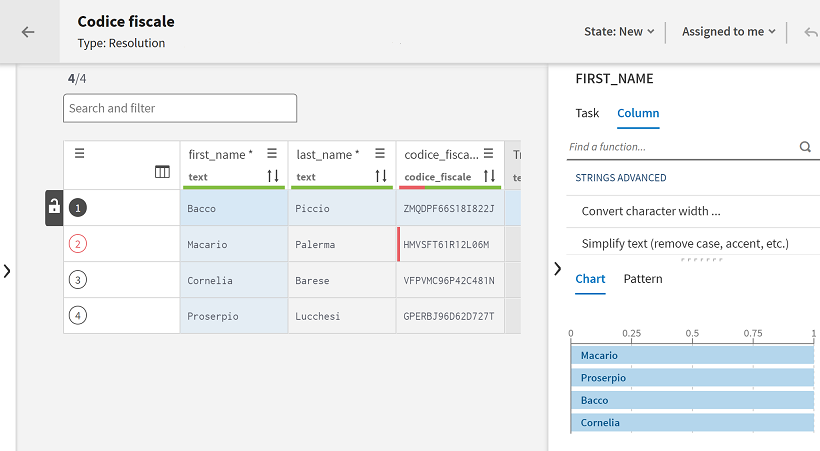Adding a new regular expression-based semantic type
You can create a semantic type based on a regular expression in Talend Dictionary Service and add it to the list of recognized data types in Data Stewardship.
In Talend Dictionary Service, not every type of data can currently be matched with and validated against one of the predefined semantic types. Italian social security numbers, also known as codice fiscale, are currently not recognized for example.
About this task
Let's say that you work for an Italian company, only dealing with Italian customers. In this example, you need to intervene and manage some customer data, such as their names, email address, or their social security number. When defining the data model in Data Stewardship, you are obliged to set the semantic type for the column containing the social security number to text as there is no predefined semantic type for Italian social security number. This is a bit disappointing and you would like to create a more specific category in order to match this type of data: a codice_fiscale semantic type in this case.
You can create this new semantic type in Talend Dictionary Service, and it will be automatically available Data Stewardship so that your data can be matched with and validated against a proper type.
Procedure
Results


